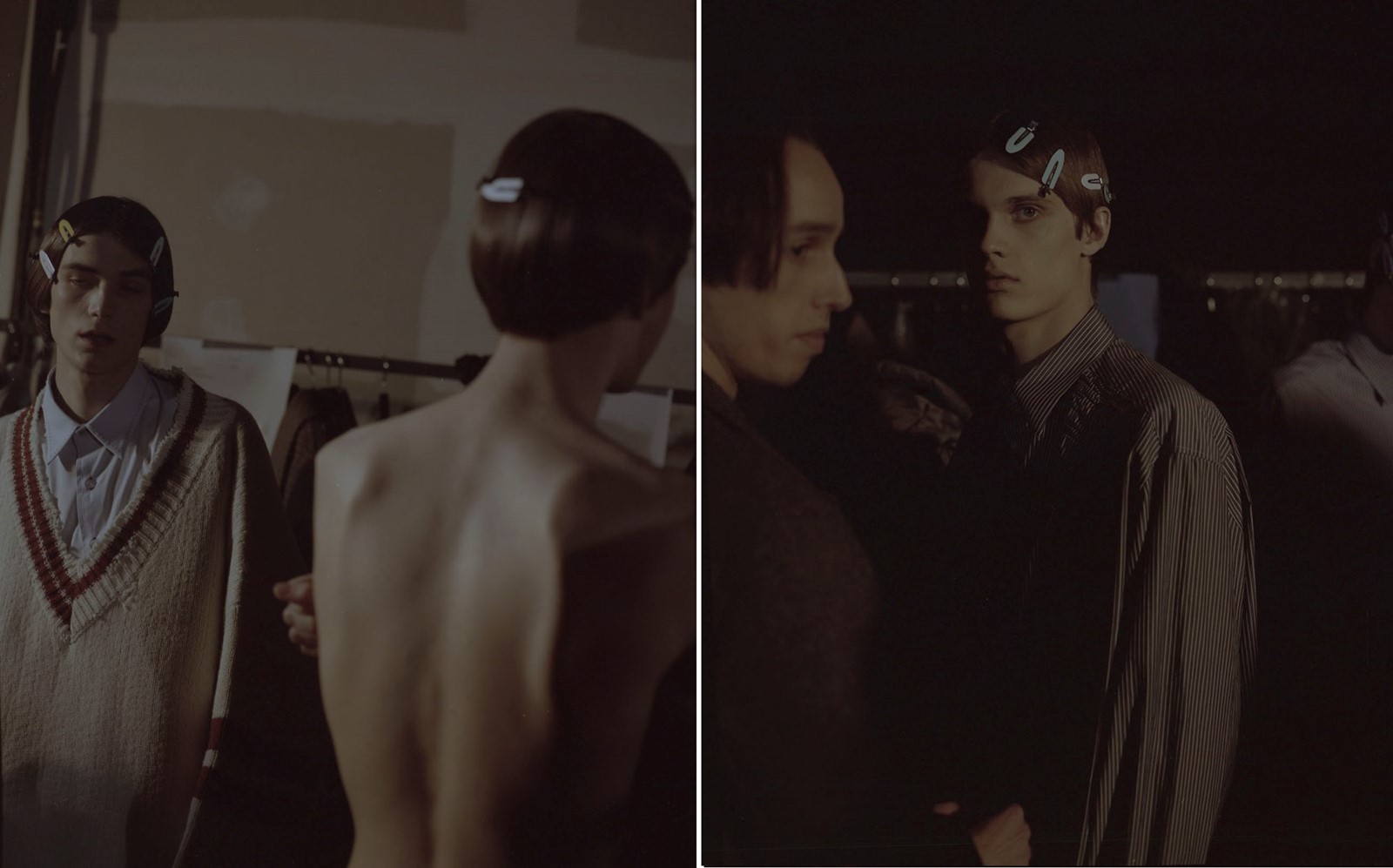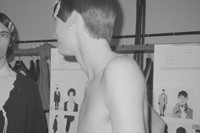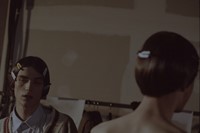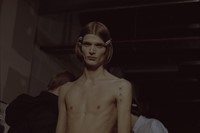I once heard Jennifer Anniston jokingly described as a "one woman genre." Although he doesn’t quite have her gift for rom-com and lovely hair, a similar argument could be made for Raf Simons as a one-man genre in the fashion industry. At this point in time, in a menswear world that seems a little underwhelming – largely a barren terrain of nice separates, sleek cashmere jumpers, and passive aggressive suiting – the alternative, dominated by the Raf Simons genre, reigns. Of course, others produced idiosyncratic and personal menswear collections and shows of great power this season – Prada and Rick Owens particularly, and each designer is in charge of their own name, which makes a huge difference for the scope of a collection – yet when Raf Simons' eponymous Autumn/Winter 2016 collection arrived, it felt like a seismic shift: it had and will have a wider resonance.
"A decade after retiring from the business, Mr Lang remains fashion’s Type O: the universal donor," wrote The New York Times' Guy Trebay in a recent show report from Milan. Of course he is; Helmut Lang changed everything in fashion, for both men and for women. And his creativity continues to be transfused into so many of other peoples' collections his haemoglobin is hardly separable. Helmut Lang is also Raf Simons’ defining hero. And yet in menswear at this point in time, it can be argued that Simons has become a figure of equal stature to Mr Lang, with his language and spirit equally transfused. Pull apart many of the latest season’s offerings, particularly from London and Paris, and see things that Simons has already made many times over. Witness a distinct mood and an attitude for boys that he was the first to bring to the fore in high fashion menswear twenty years ago – a perfect melding of inclusive youthful pop culture and alien separation – something between two worlds. And then look at Simons' own show, a place where he referenced himself in silhouette, mood and attitude, with perhaps a little prod to those that think that these things are oh so à la mode when happening elsewhere, particularly in womenswear. Raf Simons has been there, seen it, done that: he is a new generation’s Helmut Lang.
Back Into The Dark Woods
It is Tuesday 19th January, during the fittings for Raf Simons’ A/W16 show. Angelo Badalamenti’s voice can be heard emanating from the stereo; his monologue has reached a somewhat feverish pitch: "And I’d say, 'slower David?' OK… Oh that’s it, that’s so beautiful Angelo, it’s tearing my heart out. Now, she’s starting to leave, so fall down… Keep falling and falling and falling – now, go back into the dark woods…" The composer Angelo Badalamenti, a key collaborator of the director David Lynch, is talking through the pair’s working process for Twin Peaks. This will become the main element in the soundtrack for Raf Simons’ show.
Teenage boys are moving backwards and forwards, tracing out a triangular pattern in their steps, wearing oversized bubble coats. These shiny, luxurious, down-filled nylon jackets are both a comfort and protection to wear; there is an irresistible pull to put them on. At the moment, the boys are clasping the openings of the coats together with one hand – a gesture so familiar from Simons' womenswear shows for Jil Sander and Dior. What is that gesture about? "It’s from the comeback show," says Raf Simons while adjusting the shoulder of a coat and a boy’s hand gesture – he does all of the styling for his collection himself. "It’s protection; my clan, my world… I don’t know if they will do it yet." In fact, the boys do not do this in the show.
"It’s protection; my clan, my world…" – Raf Simons
What Raf Simons refers to as "the comeback show" is A/W01’s 'Riot, Riot, Riot' collection, shown in early 2001, precisely 15 years ago. Having suspended his own company for some months, it was the event that marked the designer’s complete return to the fashion world. Full of layered, oversized silhouettes, many of them featuring large MA1 bomber jackets, with iron-on patches of the disappeared musician Richey Manic on them, it is one of the seasons that was in Raf Simons’ mind while working on his latest offering – a collection where he directly references his own work perhaps more than any other. The 'Riot, Riot, Riot' collection also has an additional resonance given his resignation from the house of Dior in October last year; that hand gesture often reoccurs at uniquely significant moments for the designer.
Of course, there are many things on Raf Simons' mind for his latest collection and its presentation. A number of them will feature on a list given to the audience at the show space – something the designer has never done before – a form of free associated 'show notes' that seem to fit the dream-like mood of the collection and space, which is itself a form of meandering wooden maze. In fact, the show and collection will be titled 'Nightmares and Dreams' – this is decided the following day, on the morning of the show. At first, the collection is just called 'Nightmares.' "Let’s face it, we’re dark people," laughs Simons. "But it really isn’t just nightmares, there is something dream-like as well." The list is as follows, and it too is finalised on the day of the show.
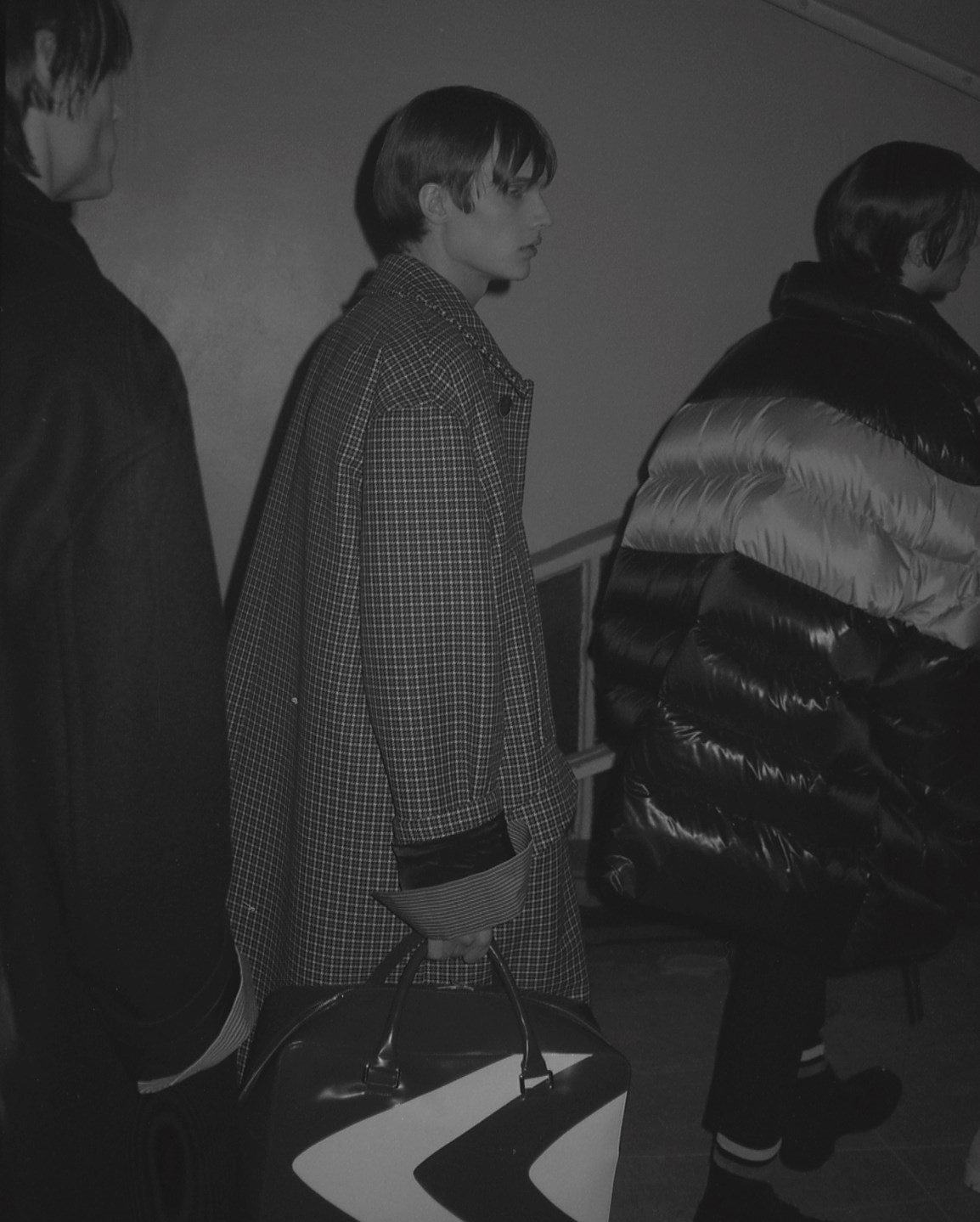
Nightmares and Dreams
ANGELO BADALAMENTI
DAVID LYNCH
MARTIN MARGIELA
CINDY SHERMAN
DETROIT
TULSA
TWIN PEAKS
ELM STREET
HORRORS
THE SCREAM
SCREAM
HALLOWEEN
AMERICAN YOUTH
BELGIAN YOUTH
DESTROYED LETTERMAN
BIG BUBBLE
THE BOY SCOUT
THE SCHOOL BOY
HIGH SCHOOL
CBGBs
THE BREAKFAST CLUB
THE SPORTS CLUB
THE NIGHTCLUB
THE OWL CLUB
RED AMERICANA
FLEMISH BLUE
THE BLACK LODGE
THE WHITE LODGE
RIOT, RIOT, RIOT
WOE ONTO THOSE WHO SPIT ON THE FEAR GENERATION…
VIRGINIA CREEPER
WAVES
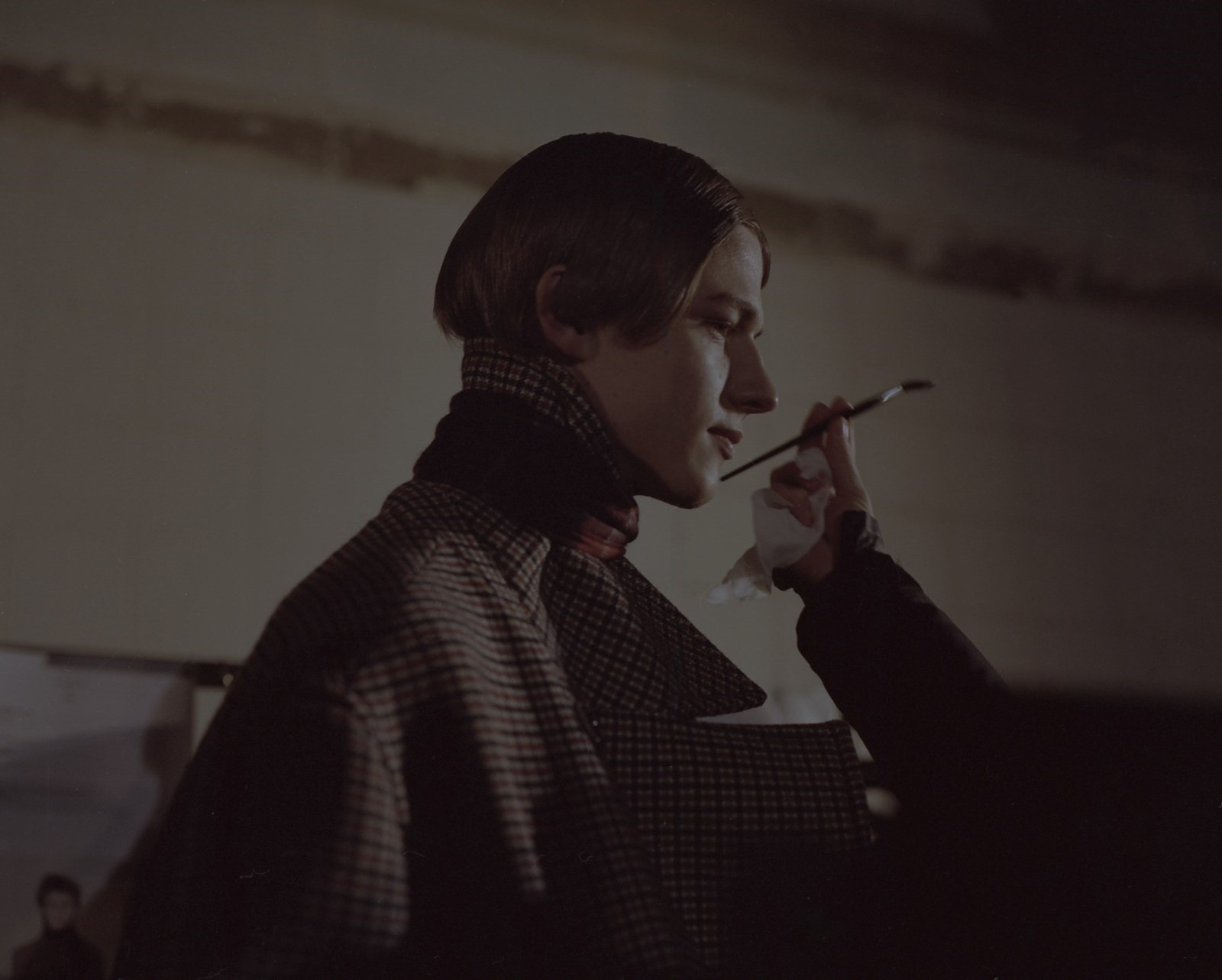
Notes On The Notes
Notes on section 1: The most important section. The heroes of and direct influences on the 'Nightmares and Dreams' collection.
Notes on section 2: Places real and imagined. The mood and atmosphere of the collection. The sound of Detroit and a nod to the collapsing city, Tulsa as the place so related to Larry Clark, Twin Peaks as an imaginary place, but as real as the others to Simons – the same goes for Elm Street. "I have never been to any of these places; they are all imaginary to me," says the designer.
Notes on section 3: The Cindy Sherman series Horrors, Edvard Munch’s painting The Scream. And the equal importance of horror films for Simons: Wes Craven’s Scream and John Carpenter’s Halloween.
Notes on section 4: American youth and Belgian youth – the pull of the two in the collection and the general importance of youth culture for the designer. The big bubble is the down jacket and a symbol of Belgian youth for Simons. At one point in the 80s, the European mountaineering brand Millet (not to be confused with the British Millets) had produced expensive and exclusive jackets that had an irresistible pull for Belgian youth – there had even been news reports about it, so expensive were the jackets. This was in Simons' head when he was designing his. The destroyed letterman sweater was a symbol of American youth gone awry.
Notes on section 5: Typical figures and places of conformity and rebellion. The boy scout and the school boy – the collection features scouting jumpers with badges, although some badges say Detroit. The school boy and the school uniform reoccur often in Raf Simons collections; his first collection was based on school boys in school uniforms. High School as a place where rites of passage are played out and CBGBs as the punk alternative for the same activity.
Notes on section 6: The idea of the club; again, a place of conformity or rebellion. From the John Hughes film to the preppy, sporting influence, both have a place in the collection. As does the night time darkness of the nightclub and The Owl Club is a secret society at Harvard. As well as owls having a particular relevance in Twin Peaks: 'The owls are not what they seem.'
Notes on section 7: Distinct colours in the collection and the connotations of them. Red Americana, relates to the gigantic red letterman sweater, Flemish Blue another key letterman colour, the colour of Delft pottery. The Black Lodge and The White Lodge are key places in Twin Peaks, also related to Theosophy. Theosophy as an esoteric belief system has played a big part in colour theory and abstraction; Mondrian had a great interest in Theosophy.
Notes on section 8: Past Raf Simons collections that have all had a direct influence on this one in proportion, knitwear, destruction and atmosphere. 'Riot, Riot, Riot' A/W01, 'Woe Onto Those Who Spit On The Fear Generation…' S/S02, 'Virginia Creeper' A/W02, 'Waves' A/W04. They have also had a fair amount of influence on other people too.
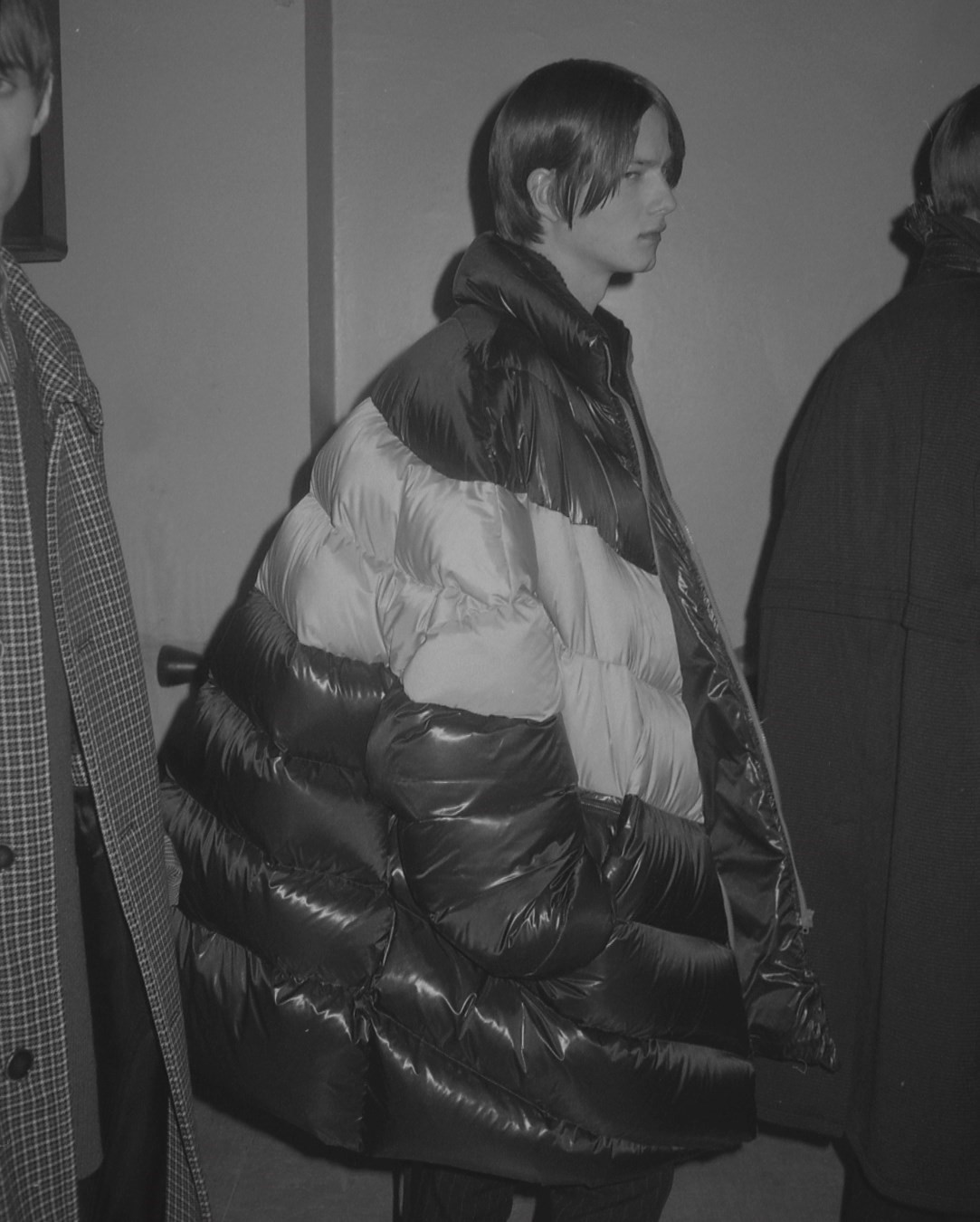
"These People Are Always With Me"
"These people are always with me," says Raf Simons of the list’s first section – the section that is decided earliest and is perhaps most important – featuring Angelo Badalamenti, David Lynch, Martin Margiela and Cindy Sherman. He has frequently returned to their influence again and again throughout his career – these people constantly live in his head – yet they are particularly key to this show and collection. It is the mood of Badalamenti and Lynch’s film and TV work, the proportions of some of Margiela’s clothes and the sickly colour palette and monstrous costuming of Sherman’s self-portraits – specifically, the Horrors series – that he has in particular mind here.
And yet there are others on that list who are often with Raf Simons as well: the makers of Detroit Techno, Larry Clark, Freddie Kruger, Michael Myers, the figure from the painting The Scream, characters in John Hughes' films, schoolboys, boy scouts, The Ramones, American kids, Belgian kids… A whole slew of people live in Raf Simons' head, both real and unreal; he is never really alone in the design process.
"My dream would be to work with Helmut Lang and Martin Margiela. All of us working together, that would be Utopia for me" – Raf Simons
Unlike many others, Raf Simons freely admits the massive influence other designers have had on him and his work. While it is commonplace – and safe – to admit a debt to the dead in fashion design, particularly when many have inherited 'haunted houses' and it is the spirit of the dead that often has to be kept alive in some way, it is not so common to freely talk about the influence of those that are actually alive. This is a no, no in fashion. And more and more Raf Simons sees this as a ridiculous pretence.
Rather, he feels that under the present system high-profile collaboration is the way forward; instead of extolling the virtues of the existence of a single 'auteur', he’d rather see some form of 'super group.' In part, this has been informed by his work with the artist Sterling Ruby, a true collaboration for the Autumn/Winter 2014 season, where even the name on the Raf Simons label was changed to a double signature for the collection. "Sterling says it was the most satisfying working experience he ever had," says Simons. "My dream would be to work with Helmut Lang and Martin Margiela. All of us working together, that would be Utopia for me, but I don’t think it will happen."
